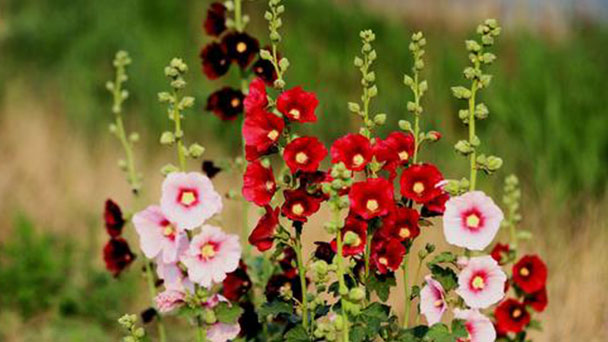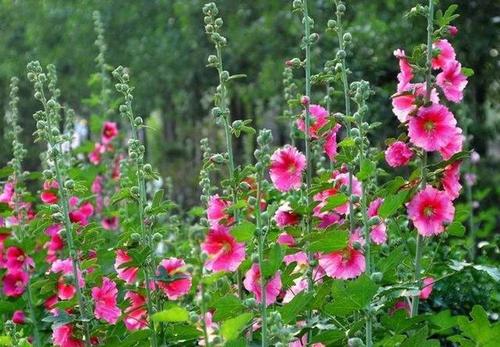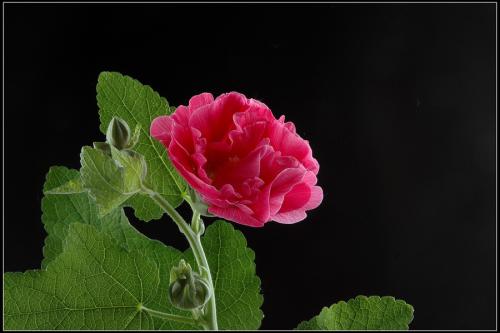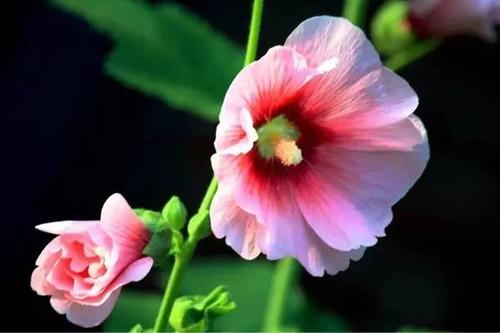How to Grow and Care for Hollyhock Flower
Written by Maggie
Nov 19 2021

Hollyhock flowers are native to Asia and Europe. The tender leaves and flowers are edible, the skin is of high-quality fiber, and the whole plant can be used as medicine. It has the effect of clearing away heat and detoxification, relieving cough and diuretic. So how to grow and care for Hollyhock flower? Please read with me with questions!

Hollyhock Flower Fertilizer Care
When we grow and care for Hollyhock flowers, attention should be paid to fertilizing, delimiting and loosening the soil to make the plants grow strongly. After flower buds are formed in leaf axils, phosphorus and potassium fertilizer should be applied, and a few leaves at the base should be cut off.
Hollyhock Flower Watering
Hollyhock flower has certain requirements for water. Keep the soil moist, but can not water too much.
Hollyhock Plant Pruning
In order to keep the plants low and prevent lodging, Hollyhock plant can cut the roots around the plants with a cone of rowan in June, and cut the roots every 2~3 weeks, and then immediately water and maintain.
Yellow ripe fruit should be immediately collected, so as not to scatter seeds. After the end of the flowering period, the plant can be cut off, to wait for the germination of new buds, and can form a cluster of plants. Hollyhock is easy to age, cultivation 2-3 years should be renewed.

Hollyhock Flower Propagation
Hollyhock propagation from seed can be carried out in spring or autumn. The south to autumn sowing as well as the north to spring sowing. After sowing, frequently irrigate, to be true leaves to grow to 3~4 pieces for transplantation, sowing seedlings generally in November.
Hollyhock can also be propagated by cutting or splitting in order to retain some excellent double-leaf varieties. Cuttage more than the early ten days of October root buds, cut into 8 cm long cuttings, inserted into the sand bed, shed shade, after 2~3 weeks can take root. Split plants are carried out more in the autumn cool after the flower, the branch that draws out the foundation can be planted separately after the root is broken up.
Hollyhock Flower Pest Control
- (1) Ringgrain disease: nearly circular disease spots appear on the leaf, 3-10 mm in diameter, brown, micro-wheel lines, dark edge color, on the birth of small black spots. When we grow and care for Hollyhock flower, 50 {BF} carbendazim 600-1000 times solution was sprayed at the early stage of the disease.
- (2) Anthrax: polygonal or irregular disease spots on leaves, 2-6 mm in diameter, brown, dark brown edge, with small black spots. Late lesions are often ruptured and perforated. When we grow and care for Hollyhock, we need to pay attention to spray control.
- (3) Gray spot: circular or polygonal spots are produced on the leaves, with a diameter of 1-5 mm, grayish brown, the dominant center is gray, and the edge is brown.
- (4)Hollyhock rust: the leaves of the disease turn yellow or dead, and there are brown, powdery piles of robes on the back of the leaves. When we grow and care for Hollyhock, In spring and summer, it should be sprayed on the plant Bordeaux liquid control, seeds should be disinfected before sowing.
- (5) Aphids: Cotton aphid and peach aphid are common aphids that harm Hollyhock. When we grow and care for Hollyhock flower, prick and suck the SAP of young shoots and young leaves, they must prevent and cure in time.
- (6) White whitefly: Rong, larvae cluster in the back of the leaves to suck juice, resulting in leaves yellow, withered. When we grow and care for Hollyhock. we should pay attention to kill.

Latest Updated
- Benefits of Bugleweed - 7 Science-backed Health Benefits
- Bugleweed Dangers & Side Effects - Is It Poisonous?
- How to Plant Evergreen Trees - What You Should Know
- When to Plant Evergreens - Grow Guide for Evergreen Trees
- 12 Wonderful Evergreen Shrubs for Your Garden
- 12 Popular Evergreen Plants with Pictures for Beginners
- When And How To Prune A Lilac Bush Like a Pro
- How to Grow & Care for Lilac Vine (Hardenbergia Violacea)
- Japanese Lilac Tree (Syringa Reticulata) Care & Propagation Guide
- Shumard Oak Pros and Cons - What to Know
Popular Articles
- Winter maintenance of Antirrhinum Majus
- How to Grow Terminalia Mantaly Tree
- How to Grow and Care for Crossostephium Chinense
- How to grow Antirrhinum Majus in spring
- Peristeria Elata (Dove Orchid) Profile: Info & Care Guide
- Underwatered Snake Plant (Sansevieria Trifasciata) - Signs And How To Fix
- How to Care for Brazilian Jasmine Plant (Mandevilla Sanderi)
- How to Grow & Care for Graptopetalum Purple Delight in Summer
- Rosa Chinensis (China Rose): Plant Growing & Care Tips
- How to Care for Baby Sun Rose (Aptenia Cordifolia)